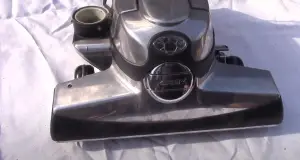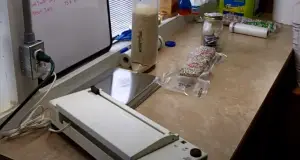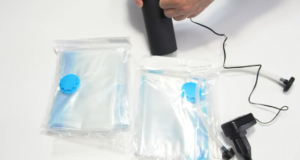Want to Know How to Measure Vacuum Suction Power?
Well, you have come to the right place. To find out how to measure the vacuum suction power, stay focused and read till the end.
A vacuum cleaner that possesses low suction power leaves your home dirty every time. Therefore, it is important to check out your cleaner’s suction power to get better and efficient results.
What Is Vacuum Suction Power?
Before learning the measurement of vacuum suction power, we should know what vacuum suction power is. Vacuum suction power is the pressure difference between the inside and outside of a vacuum. Vacuum cleaners are used to suck the dirt and dust from floors or any surface. For this purpose, a vacuum sucks the particles in a chamber using a motor. So, the power required for the motor to create maximum pressure difference is called the Vacuum’s suction power.
How Can We Determine the Suction Power?
The power supply can determine the suction power of the motor. The greater the power supply, the greater will be the suction power. In this regard, vacuum cleaners with high suction power can be used for home cleaning.
How to Measure Vacuum Suction Power?
In order to measure the suction power of the Vacuum, use the method of water lift which is also known as static pressure. To measure, follow the given steps;
- Add some water to the vertical tube
- Now, put the hose of your Vacuum on top of it.
- Check how many inches’ water has risen. Normally suctions measurement reaches 85 inches.
Additionally, the suction power of a vacuum cleaner can be measured in different ways, such as;
- Watts
- Pascals
- Amps
- Sealed Suction
- Air watts
- Airflow (CFM)
· Watts:
Measuring the power supply of a vacuum cleaner in watts is a common method. Wattage is the measure of the energy of the electric motor. However, in vacuum cleaners, wattage describes how much energy the product needs to operate.
For commercial use, vacuum cleaners consume power between 1000 to 4000 watts. In contrast to commercial vacuum cleaners, the household vacuum cleaner consumes power between 1000 to 1500 watts. But the total motor power watts are different from the suction power watts.
On the other hand, measuring vacuum power in watts does not explain the performance and the power of the motor. It just measures the power supply.
· Pascal:
Suction pressure is measured in pascals. Suction pressure is the maximum pressure difference between the inside and outside of the vacuum cleaner. Pascal is a measure of the pressure that is equal to the pressure of one-newton force per square meter. The household vacuum cleaner can create a pressure of 20kpa.
The higher the suction pressure, the easier the vacuum cleaner will perform. Powerful vacuum cleaners have higher suction pressure. But it is inversely proportional to the airflow specification. For instance, an inexpensive vacuum cleaner has higher airflow but lesser suction power.
- Amps:
Amps are the input power of the vacuum cleaner. It is the measure of the consumption of energy. However, it is not the actual power of the vacuum cleaner due to power losses in general. In the United States, vacuum cleaners measure the input current in amperes. Amps range from 5 to 12 amps. If you want to get the wattage, then multiply the value in amps by the line voltage, which is 120V.
· Sealed Suction:
Sealed suction is a test to check the suction power of the vacuum cleaner. Water is filled in a sealed container. If the vacuum cleaner has high suction power, then the level of water will increase. So this is the best way to determine the suction power.
· Air watts:
The output power of the vacuum cleaner is measured in air watts of the airflow. It is measured at the end of the cleaning hose. An Air watt is a watt that carries a unit of air out of the vacuum cleaner. In short, it is the most certain way to measure the suction power.
· Airflow (CFM)
Airflow is often referred to as CFM. CFM is the measure of the volume of air in cubic meters per minute or liters per second. Airflow is the measure of the air that is carried to the suction of the vacuum cleaner. Commercial vacuum cleaners have airflow ranging from 50 to 1000 CFM. The higher the airflow, the quicker the pickup of the dust by the vacuum cleaner, and the higher the suction power.
Moreover, vacuum cleaners with higher airflow require larger filters, stronger motors, and thicker cables.
Factors That Affect The Vacuum Cleaner Suction Power
Besides the measurements of the suction power of the vacuum cleaner, there are some other factors that affect the suction power of the motor.
- Filters that are used in vacuum cleaners affect their performance. Vacuum filters filled with dust don’t work properly. Hence, it would be best if you regularly clean or replace the filters for the best performance of a vacuum.
- Extension and motor design also affect the performance of vacuum cleaners.
In short, you should keep all the features in mind before purchasing vacuum cleaners.
Bottom line
Vacuum cleaners are one of the most incredible machines that have helped everyone a lot. Perfect cleaning with amazing suction technology, vacuum cleaners provides you fresh and dust-free home. However, sometimes they incur some issues which may require you to measure their suction power.




